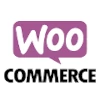
Average order value (AOV- Average Order Value) is one of the main performance indicators for measuring the success of an e-store.
The AOV formula is simple:
Total Sales / Total Orders.
In other words, if you sell goods worth 1000 euros in ten sales transactions, the AOV would be 100 euros. But what is a good AOV and how to achieve it?
What is a “good” average order value
What is considered a good AOV depends on several factors, including:
- From the field of trade, i.e. what products do you sell and to whom.
- From the sales channel or platform. For example, do you sell in your e-shop or on a trading platform.
- From the device used by the consumer.
While it’s fine to use industry averages to gauge your efforts, the focus should be on improving AOV regardless of what your competitors are doing.
A “good” AOV to aim for tomorrow will be higher than your number today.
Why monitor and improve average order value?
The main reason for improving the average order value is quite logical: the more money customers spend per transaction, the more revenue the company earns. Increasing AOV often also means that the cost of conversion and customer loyalty becomes more cost-effective, and the time, money and other resources saved can be invested elsewhere.
AOV tracking allows you to better understand your customers. For example:
- What kinds of things do they buy regularly?
- Do they buy additional products in addition to the main purchases?
- How much are they willing to spend and what makes them do it?
- When or for whom is the usual purchase amount less likely to be exceeded?
Once you have this information, you can begin to identify ways to get your customers to spend more. However, the goal should not be to sell more at any price, but to offer more value!
3 ways to increase your average order value
1. Upselling and upselling
As digital channels are saturated with marketing messages and competition in e-commerce is high, it is very important to monitor and optimize the most accurate targeting and effectiveness of campaigns and activities.
Even for a small niche business, activities related to improving AOV should be tailored to a specific customer or audience.
In most cases, it makes sense to track AOV based on a single target group, segment, or even individual customer. To start with, you could try segmenting your customers into three groups. For example:
- big spenders
- average spenders
- low spenders
Segments can then be further broken down based on additional data such as their purchase frequency, type of products they buy, etc.
Segmentation of customers based on data related to AOV enables the development of marketing campaigns, initiatives and dynamic offers specifically for this segment.
Upsell: Offer even more valuable products
Upsell is a technique that can be used to introduce similar but even more valuable products to customers who are considering specific purchases. The recommended products should be in line with the customer’s needs, expectations and based on the specific buyer’s journey.
EXAMPLE:
The customer wants to buy a new TV. They look at and compare products in a specific price range. The store displays products of a slightly more expensive price range to him in parallel. With this move alone, it is more likely that the customer will finally decide to increase their budget.
In order to show you truly valuable and personalized offers, you need to know a lot of other information, such as what the customer is looking for in a new TV, how much they are willing to spend, and what might make them spend a little more.
For example, if they are willing to buy a €279 50-inch TV, they may actually be interested in spending an additional €50 to increase the screen size by another five inches.
Upsell: Display additional or frequently purchased products
Cross sell is the introduction of products or services that complement the “main” product on which the customer focuses. The premise of offering additional sales is to offer added value to the product that the customer originally came to look for.
In many e-stores, the functionality “Often bought together” or “You may also be interested” has been taken over from Amazon.
EXAMPLE:
The customer buys cream cheese in the e-store, adds it to the shopping cart, and then different flatbreads appear in front of him.
As a rule, when making additional sales, products are offered that cost less than the original product.
Even in the case of additional sales offers, the main focus should be on providing the customer with added value.
To do this, it is necessary to analyze in advance what is important to them about the product they came to buy.
According to this, a selection of additional products can be created that allow them to get more benefit from the original product – whatever “more” means for that customer.
2. Various incentives: discounts and loyalty programs
It is also possible to get customers to spend more through motivation – for example, in the form of a discount, free delivery, a gift, etc. Many stores offer a discount or free shipping if the order value is greater than X amount.
AOV can also be increased through loyalty program initiatives. Starbucks loyalty program is a classic example: with every purchase or dollar spent, the customer earns stars. If a certain number of stars are accumulated, the customer has “earned” a free drink. Several e-shops use the same tactics.
Such rewards can very likely increase the customer’s AOV in the future as well. For example, if a customer who usually buys regular coffee earns a free special drink as a reward – and they like it – they may start buying more special coffee from time to time. Which they probably wouldn’t have done if they hadn’t been able to try it for free.
Don’t think directly about sales. Try to think in terms of what can be offered to a specific customer at a given time. Something that would be so irresistible that they would have no problem spending a little more money to get it.
3. Improve the overall customer experience
The easier and more pleasant it is for the customer to navigate your e-store, the more likely they will do so.
This in turn means countless opportunities to come across your various products and offers – this can lead to additional purchases every time.
However, if navigation in the store is difficult, product information is poor, or the page loads slowly, customers may not be willing to browse and see what else you have to offer. While they may persevere on the page long enough to make the necessary purchase, they are unlikely to make any further purchases.
Summary
It all comes down to value for customers. If the value of the offer – as customers perceive it – is worth a little extra money, they will gladly accept it.
But for whom and what? It needs to be tested.
It is also important not to sacrifice other important metrics in the process in order to improve AOV. About those in the next posts!







